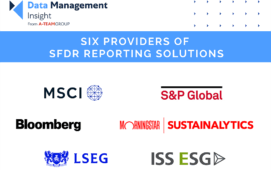
It comes as no surprise that the ongoing Libor transition is posing and will continue to pose massive data management challenges for banks and affected financial institutions – many of which we have already covered in detail in these pages. But one factor that might perhaps have been overlooked is the impact of the LIBOR transition on FRTB reporting, particularly for US dollars, where the proposed replacement rate has the potential to present very real problems when it comes to compliance.
Moving off sterling Libor is not necessarily so much of an issue, because SONIA has been in existence since 1997 so the market is very liquid and the historical data is widely available. But for US dollars, the replacement is SOFR – which utilises a completely different methodology in terms of how it is constructed and how data is used.
“There are nuances, it’s not like-for-like,” agrees Navin Rauniar, Partner at TCS where he is responsible for the LIBOR Transition. “SOFR is a brand new rate, it has only been in existence in this form since 2018. So you are looking for a data set that doesn’t exist. To get that data, you’ll need to build a proxy. And that proxy cannot be US dollar Libor.”
The problem is that the system is moving from a rate that incorporates term risk and credit spread, to a risk-free rate. That presents a major issue when it comes to modelling the time series data that is required for FRTB reporting – how do you model that time series?
“If you’ve only got a dataset going out one or two years, that’s not enough data to do FRTB modelling with,” warns Rauniar. “Value-at-risk, expected shortfall – these are all based on distribution curves and capturing the end of the tail, and to do that you need good data with attributes. That hasn’t been tested or modelled for SOFR yet, and financial institutions are only now looking at this in any serious detail. The problem is that if your data is not validated, and not tested against all of your positions, how can you sign off your risk P&L?”
The challenge, stated simply, is: what time series should banks use, and how should they proxy that time series? If you are moving your clients onto a risk-free rate, this means you are stripping out the credit term premium from Libor. So then how do you back-test your positions? What alternative rates can you use as proxies? Will they be acceptable to the regulator?
It seems as if these issues have not yet been seriously considered – either by the regulators (in the US or the UK) or by the financial institutions themselves. But time is running out – and the lack of clarity presents the possibility of arbitrage.
“It’s very easy for the Fed and the BOE to say, okay, we’re going to end LIBOR, but have they thought about the risk implications and how that works? To be very honest, I am not sure they have,” thinks Rauniar.
The industry is currently in limbo, and with quant analysts essentially looking at how to test the data to meet time series requirements, that raises concerns around the opacity of the process – and how open it could be to interpretation.
“Everyone needs to be aware of this, even in the UK – anyone who trades in US dollars is going to be affected,” stresses Rauniar. “But even the Tier 1 banks are only just starting to look at the issue – and for the most part, the smaller institutions haven’t even started yet.”
With just two years to go to resolve the issue however, the question of US dollar SOFR time series data should be very much at the forefront of Libor transition preparations.
To learn more about how to leverage the Libor transition to improve your data management game, register for our upcoming Webinar on 30 April, 2020.
Subscribe to our newsletter




